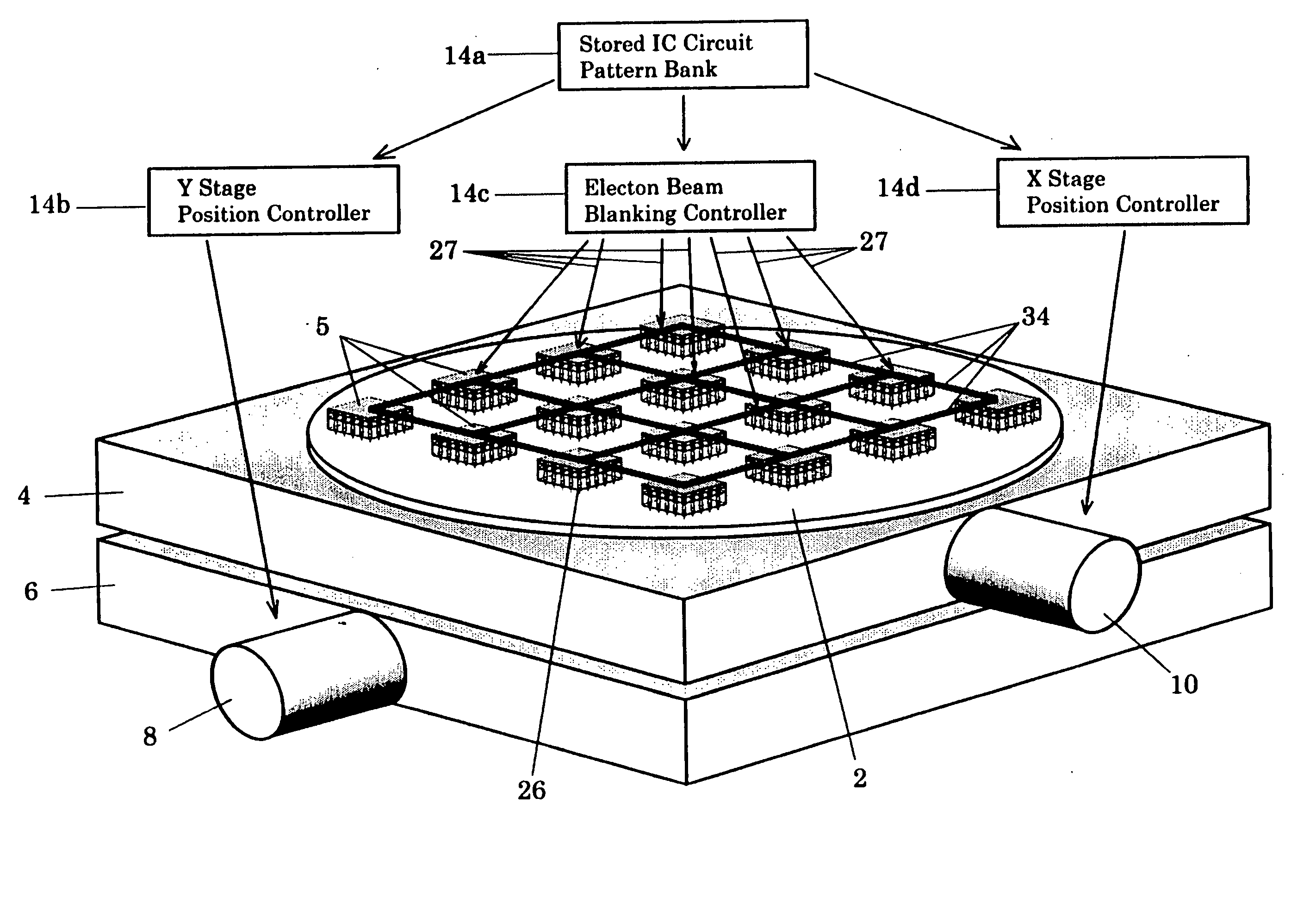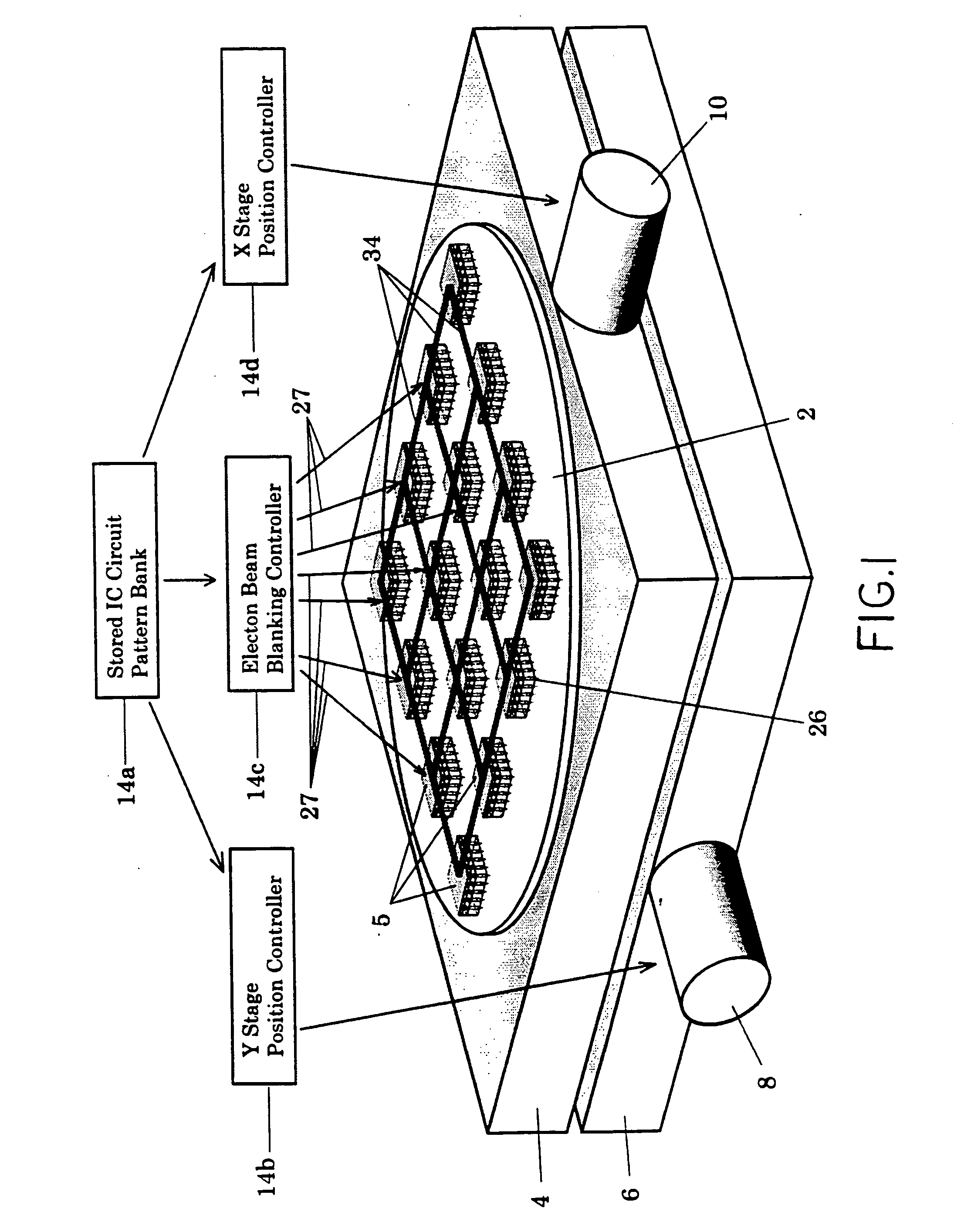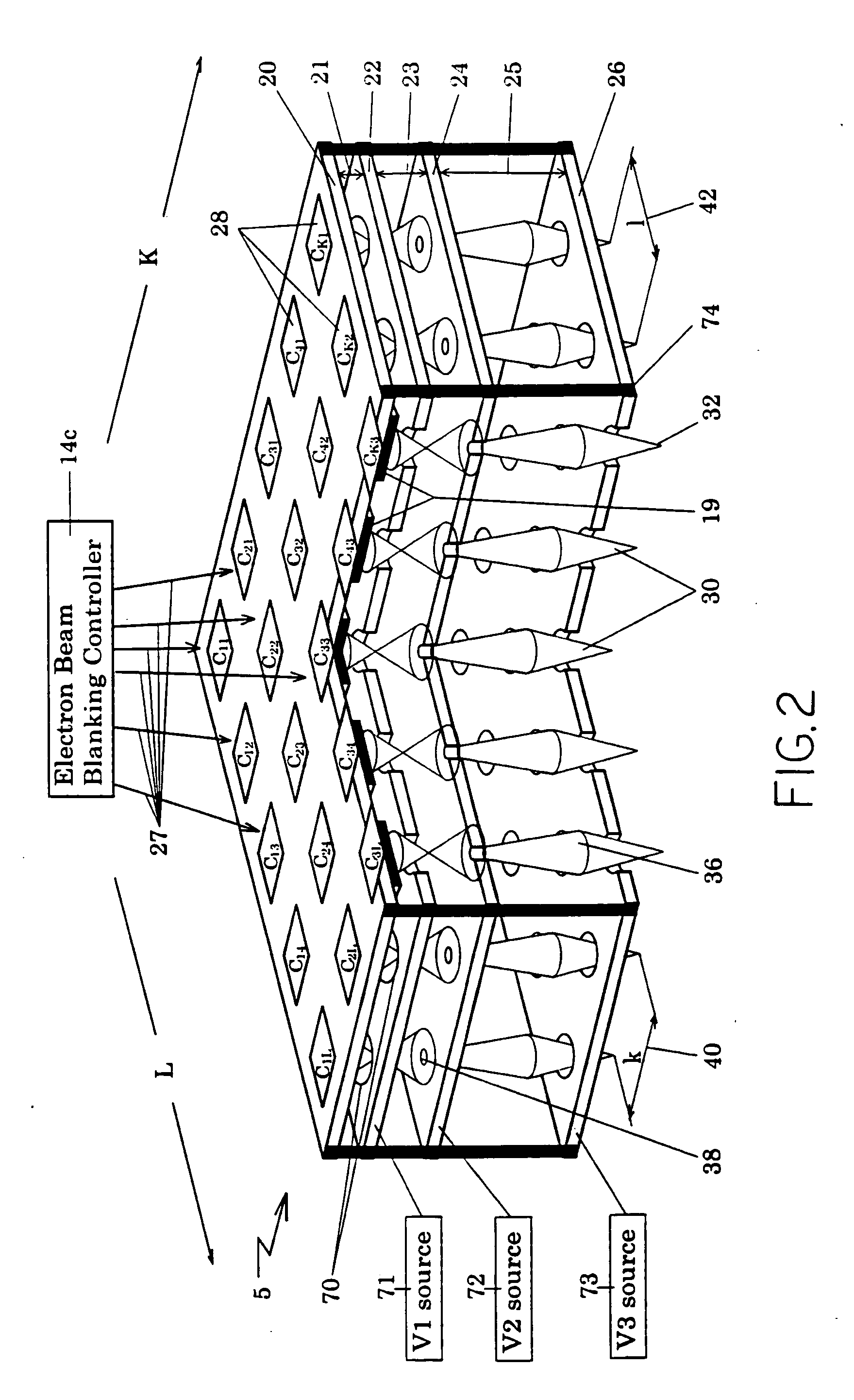Parallel multi-electron beam lithography for IC fabrication with precise X-Y translation
a multi-electron beam and lithography technology, applied in the field of parallel multi-electron beam lithography for ic fabrication with precise x-y translation, can solve the problems of low throughput and high magnetic deflection sensitivity, the density of components may soon reach a physical limit, and the use of these wavelengths may not be practical, so as to alleviate the problems of low throughput and high magnetic deflection sensitivity, the effect of low cost and high precision
- Summary
- Abstract
- Description
- Claims
- Application Information
AI Technical Summary
Benefits of technology
Problems solved by technology
Method used
Image
Examples
Embodiment Construction
[0026] The following discussion assures that 176, 16 mm×16 mm IC circuit patterns are to be written on a silicon wafer that is 300 mm in diameter using a line width of 65 nm. The concept discussed in the following paragraphs, however, is applicable to any size wafer, IC pattern size and resolution within the scope of the device.
[0027] Referring to FIG. 1, there is shown a conceptual illustration of the 176 MCEG arrays 5 arranged in a rectangular array AIJ across the circular area of a silicon wafer 2 in accordance with a preferred embodiment of the present invention. For reasons of clarity, FIG. 1 does not show all 176 MCEGs as it is a conceptual drawing. The MCEG arrays 5 are spaced every 20 mm in the X and Y directions to allow for about 4 mm of space on each side of an array to accommodate a support frame 34 and electrical connections. Support frame 34 is secured to the framework of the stepper device so that the MCEGs are held in a permanently fixed position with the last elect...
PUM
 Login to View More
Login to View More Abstract
Description
Claims
Application Information
 Login to View More
Login to View More - R&D
- Intellectual Property
- Life Sciences
- Materials
- Tech Scout
- Unparalleled Data Quality
- Higher Quality Content
- 60% Fewer Hallucinations
Browse by: Latest US Patents, China's latest patents, Technical Efficacy Thesaurus, Application Domain, Technology Topic, Popular Technical Reports.
© 2025 PatSnap. All rights reserved.Legal|Privacy policy|Modern Slavery Act Transparency Statement|Sitemap|About US| Contact US: help@patsnap.com



